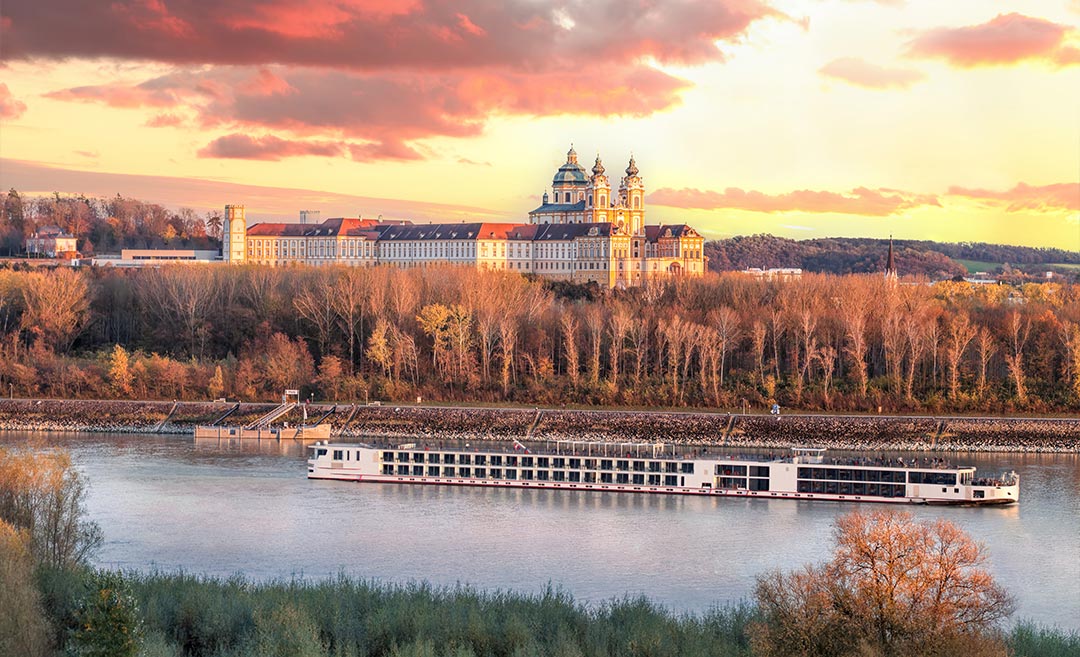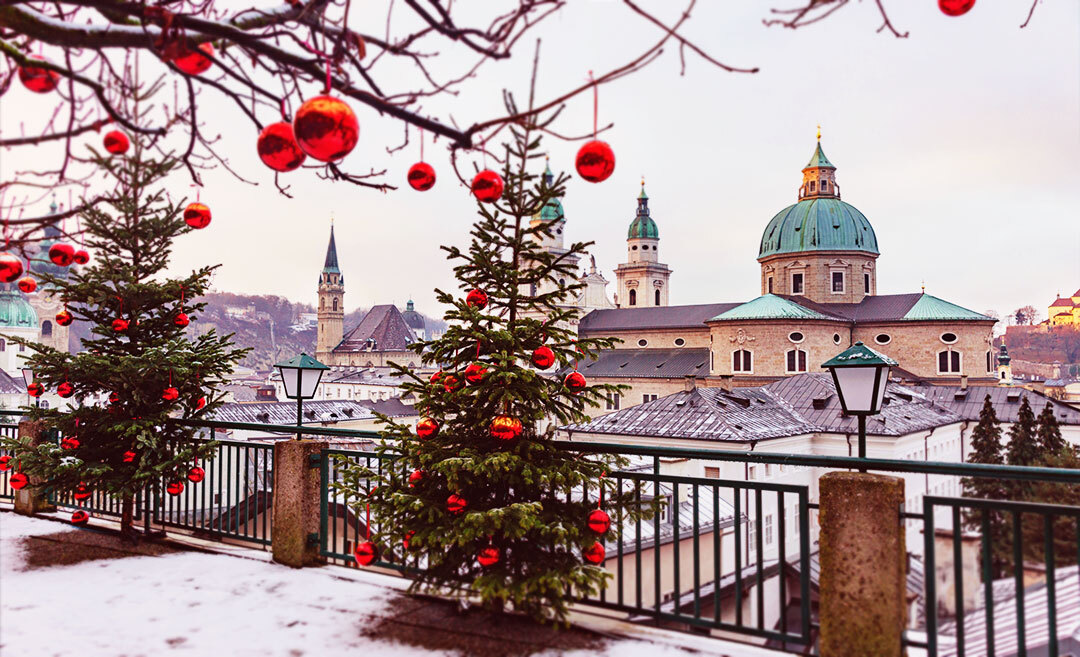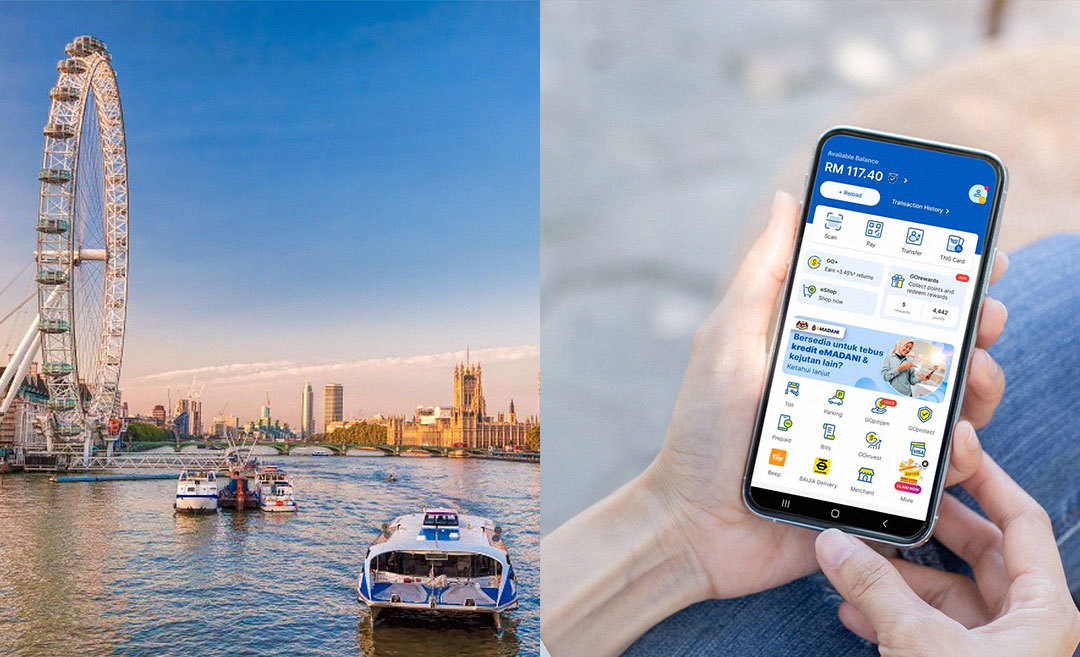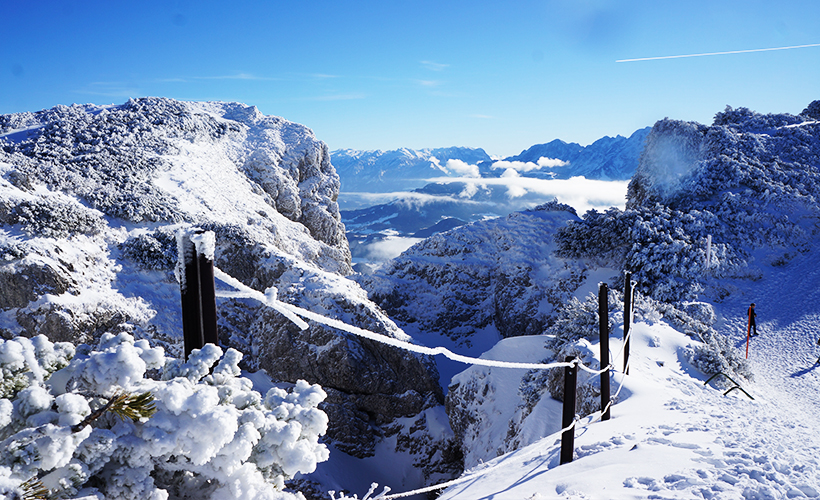The Wachau is a 40-kilometre riverine stretch of the Danube River between Melk and Krems in Austria. Exploring the river and a handful of small towns along this river is a highlight for those lucky enough to enjoy a multi-day Danube River cruise. However, as I discovered on my most recent visit, you don’t have to part with large sums of hard-earned money to appreciate the region’s beauty.

Getting from Vienna to Melk
My journey began after flying into the Austrian capital, Vienna. From here, I departed by train to St. Pölten, where I changed trains to Melk. After considerable research, Melk was chosen as my base for my time in Wachau. Over the few days I was in the small town, I realised that most visitors came for the day to tour its famous abbey. In the evening, the cobblestone streets were nearly deserted, and the locals mostly patronised its cafés, restaurants, wine bars, and shops.

The centre of the small town is a 10-minute walk from the railway station, and I soon discovered that walking around the town was easy, especially in its pedestrian-only precinct.
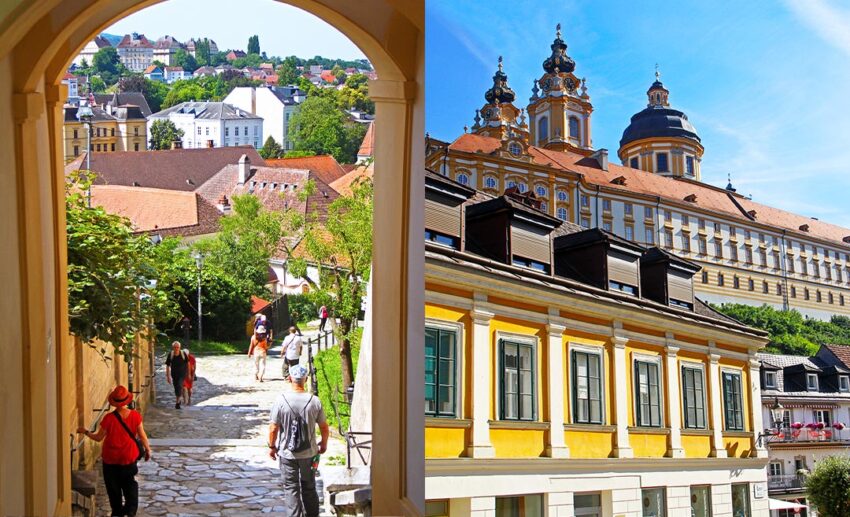
Majestic Melk Abbey
The other obvious feature of the town was the massive Melk Abbey, perched high above the town and visible from all around. The baroque-style abbey, referred to as Stift Melk in German, is painted a vibrant mustard-yellow to make it even more prominent. The original Benedictine abbey dates back over 1,000 years, but the grand structure visitors now clamber to inspect only dates back to the 18th century.
There are several parts to this landmark UNESCO World Heritage Site, including a large garden on its eastern end. The views over the town and the surrounding countryside warrant the gradual incline up to the rocky knoll where the abbey stands. The abbey is one of Austria’s most visited tourist sites so that the summer crowds can be large and the queues long. There is an entry fee, and guided tours are offered year-round.
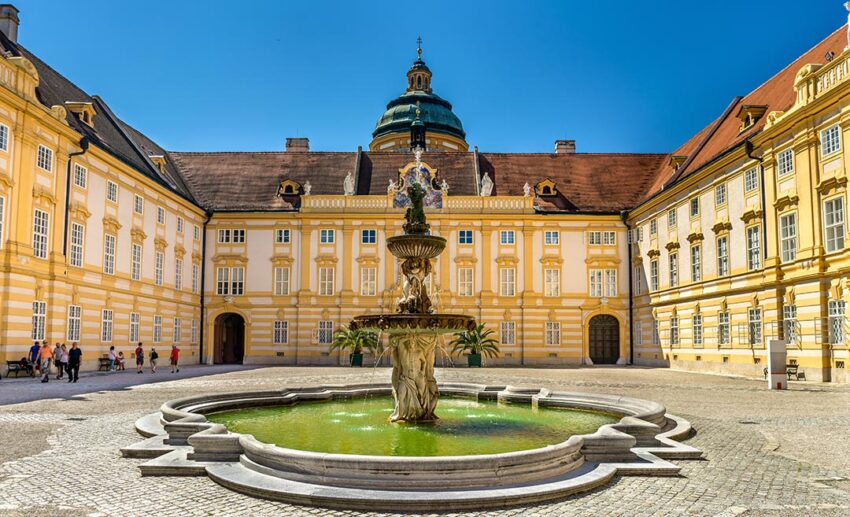
One of the highlights of an abbey tour is visiting the vast library maintained by the Benedictine monks. Accessing the library across an open, curvaceous terrace with views over the Danube is an excellent introduction to the ornately decorated library that houses thousands of ancient tomes. It is said that author Umberto Eco was inspired by the library and the abbey when he penned the monastic detective novel and movie, The Name of the Rose.

River cruising from Melk to Spitz
Cruise boats travel along the Danube from Melk to Krems and back, and this is the best way to appreciate the river life. I travelled on the MS Dürnstein, which departed from the ferry terminal, a 15-minute walk from the town centre. Considering it was a summer Sunday afternoon, I wasn’t surprised to see the boat full of maybe 200 tourists onboard. Many were on the upper deck, making the most of the sunshine, while others were dining below in the enclosed restaurant.
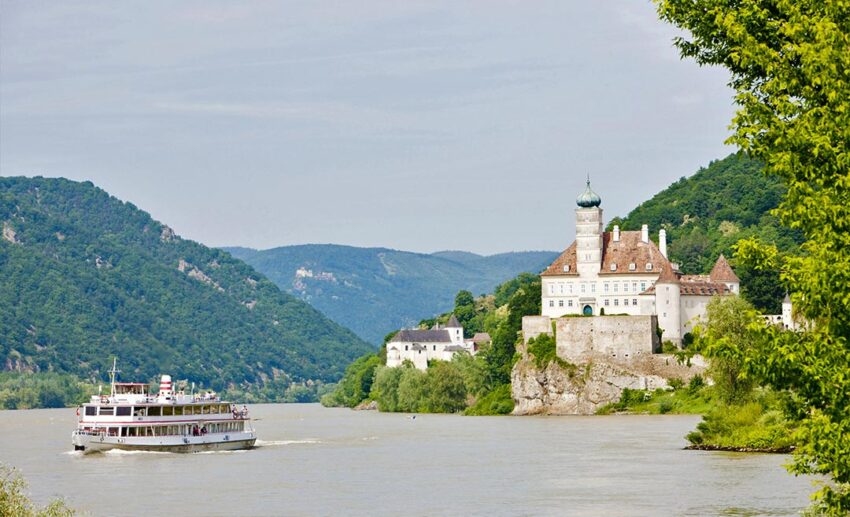
Sleek and luxurious river cruisers slipped past on their multi-day river cruise, and while I envied the well-to-do passengers on these vessels, I took comfort in knowing that my cruise was way cheaper than theirs. Several impressive structures stand on the banks of the Danube, including Kloster Schönbühel, which dates back to the 12th century.
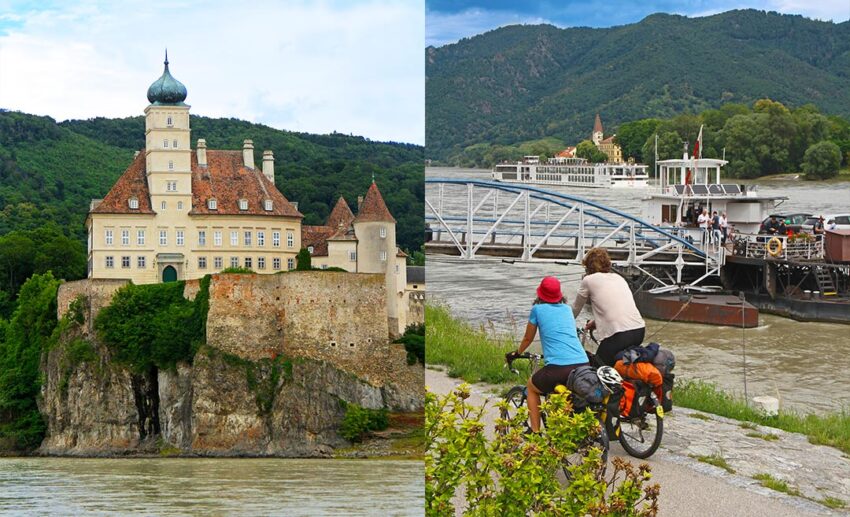
My river cruise ended at Spitz, where I alighted to explore the small wine town. Vineyards extend up the steep northern slope and across the flatter southern bank of the Danube. From the town, I watched people cycling on well-formed cycle paths along both sides of the Danube River. From Spitz, I caught the bus to Dürnstein.
Fruits of the vines in Dürnstein
The powder-blue and white spire of the Dürnstein Stiftskirche stands impressively against the steep, terraced vineyards in the walled village of Dürnstein. The ruins of another religious site stand on higher ground and are famous as they are where Richard the Lionheart was imprisoned. Dürnstein is an impressive village with several small wine cellars where local wines by the glass are most affordable.
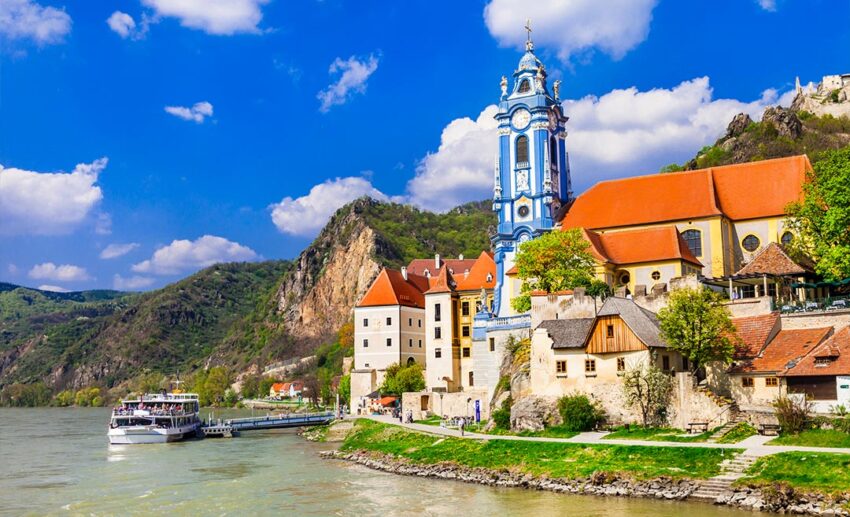
Wine has been produced in the Wachau for hundreds of years, with many estates having terraces that extend steeply from the Danube River up the slopes of the riverbanks. Grüner Veltliner accounts for 33% of all Austrian grapes; wine from this variety is the jewel in the nation’s wine industry. This white wine is the perfect accompaniment to most Asian dishes.

My interest in Austrian wines was aroused after dining at Christoph’s Restaurant in Penang. Its owner, Christoph Girsch, is an Austrian sommelier, so he told me all about the exciting wines produced in the country, especially those he imports, like Laurenz V (Laurenz Five). He arranged for me to visit the estate of Peter Schweiger in Zöbing, just north of Langenlois, to sample a range of superb wines produced by both Peter Schweiger and Laurenz V.
Austrian delights
Dining is a treat on any of my holidays, especially in Austria, where I was able to enjoy classic dishes such as wiener schnitzel, tafelspitz (boiled beef), apple strudel (apple and flaky pastry dessert), Sachertorte (chocolate cake originally served in the Sacher Hotel), and backhendl (crumbed chicken). In addition to the excellent wines, the range of beer is extensive and enticing, coffee is an art form, and the range of cakes is endless.
Wiener schnitzel is a veal cutlet pounded flat, covered in bread crumbs, and deep-fried. It is usually accompanied by potato salad, lemon wedges, and cranberry sauce. It appears on most Austrian menus, and the version I had at the Rathauskeller in Melk was deliciously filling.
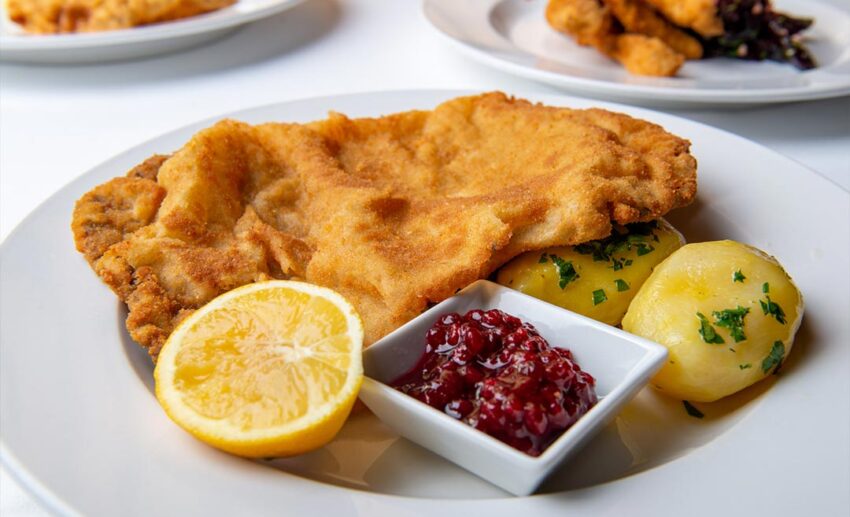
While best known for its vineyards, the Wachau also has many orchards where apricots flourish in perfect growing conditions. Apricot crêpes appear on most springtime menus, and the apricot crêpe I had on the terrace of the Hotel Restaurant Richard Löwenherz in Dürnstein was the perfect dish for the setting over the Danube River.

Wachau travel tips
Getting there: There are no direct flights from Kuala Lumpur to Vienna, so visitors have no choice but to transit on the way with Austrian Airlines, using Bangkok as its regional hub. Some trains operated by ÖBB depart directly from Vienna International Airport for Bad Ischl, with a change of train required at Attnang-Puchheim. The journey takes under four hours.
Getting about: The Wachau is a 40-km-long winding stretch of the Danube River from Melk to Krems, and there are several ways to travel along it. A river cruise is an essential way to explore the river in one direction or by bike or train. The Wachaubahn (railway) travels along the northern bank of the Danube, connecting the towns of Emmersdorf, Spitz, Dürnstein, and Krems. Buses are the best way to travel between Melk and Krems, but they stop at most villages and are a little slower than the train.

Accommodation: Stay in the Hotel Wachauerhof (Melk), Hotel Restaurant Richard Löwenherz (Dürnstein), and LOISIUM Wine & Spa Resort (Langenlois).
For useful tourist information, the Austrian National Tourist Office

